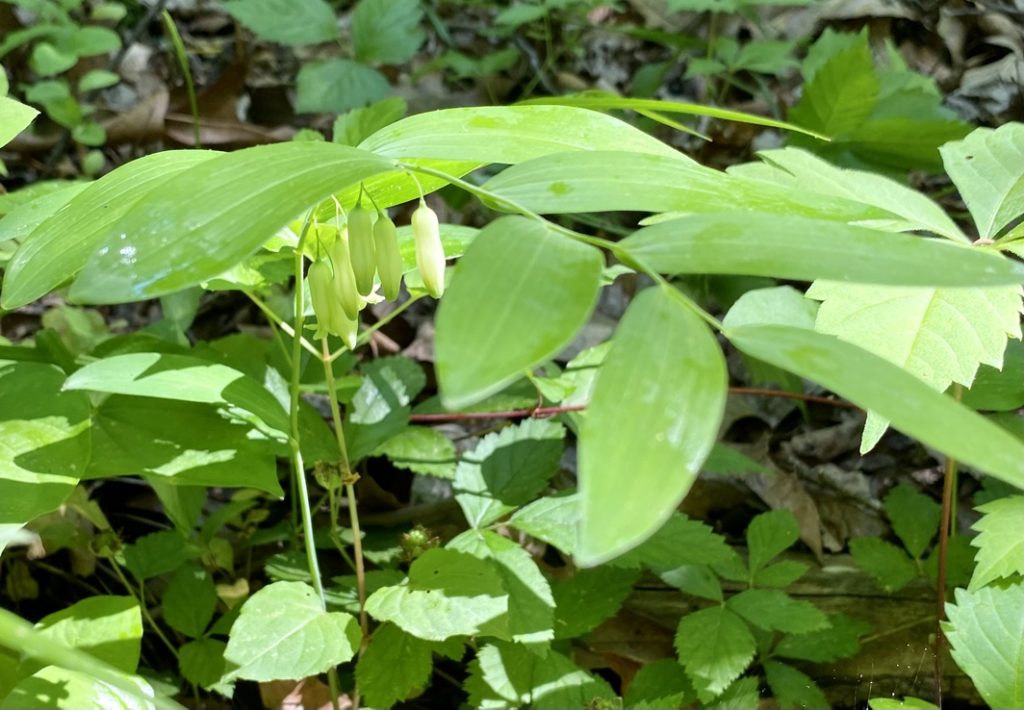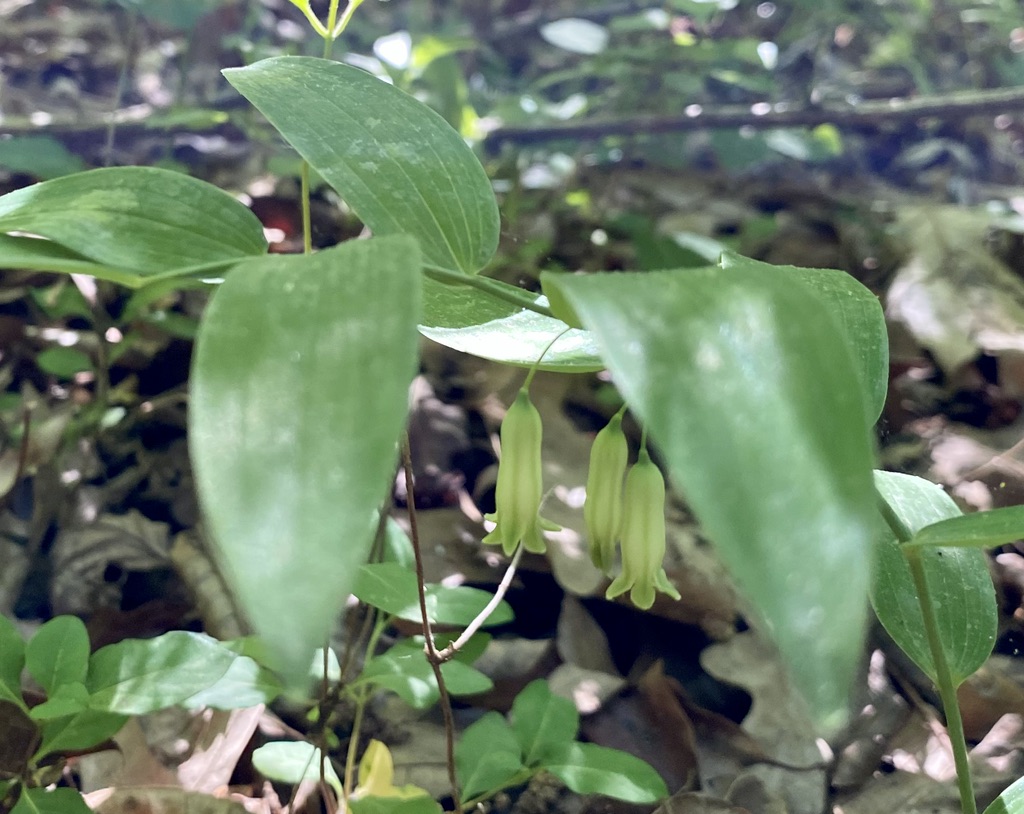
What’s In Bloom | Solomon’s Seal
- Solomon’s Seal (Polygonatum biflorum) is an herbaceous perennial native to eastern and central United States and Canada.
- Grows from thick rhizomes as arched, unbranching stems with alternate leaves.
- Attractive to numerous native pollinators, including bees, butterflies, and birds.
- Hanging umbels of flowers differentiate it from its lookalike, Eastern Solomon’s Plume, which forms a plume of flowers at the end of each stem.
Solomon’s Seal (Polygonatum biflorum) is an herbaceous perennial plant, native to eastern and central United States and Canada. It generally grows between 1-3 feet tall, and thrives in rich, shaded forest areas with medium-to-wet, well-drained soil. Spreading slowly via rhizomes, it forms colonies of singular, unbranched, circular stems which grow arched rather than erect. The smooth stems zigzag between alternate leaves which clasp around them. The leaves, up to 5 inches long and 3.5 inches across, are smooth and pale green with noticeable parallel veins running down their length.

For 3 weeks in late spring-early summer, Solomon’s Seal blooms, with nodding umbels of 2-5 flowers each emerging from the axils of the middle and upper leaves. Underneath its arched stem and leaves, each peduncle (flower stalk) typically has anywhere from 10-20 groups of tiny, ½-¾ inch long flowers. They are pale, whitish-green and bell-shaped, with 6 small, flaring lobes along the rim. Each one has a pistil with a style and 6 stamens. In late summer, tiny berries replace the flowers, turning dark blue-violet when ripe.

Some Native American communities, as well as early colonizers, used the starchy, edible rhizomes as a potato-like food, as well as medicinally. Both the roots and shoots are edible, but the berries are mildly poisonous and can cause issues in the digestive tract. While wild plants should not be harvested for food, Solomon’s Seal is a good option for cultivation in woodland gardens, wild gardens, naturalized areas, native plant gardens, or shaded borders. It is a relatively rugged plant and can survive in less-than-ideal conditions.
Benefits to biodiversity | The flowers of Solomon’s Seal attract numerous native pollinators including species of bees, butterflies, and birds, such as the Ruby-Throated Hummingbird. The roots and leaves are fed on by mammals, and ripe fruits attract birds.

Sources:
https://www.wildflower.org/plants/result.php?id_plant=POBI2
https://www.illinoiswildflowers.info/woodland/plants/solomon_seal.htm
https://www.minnesotawildflowers.info/flower/smooth-solomons-seal